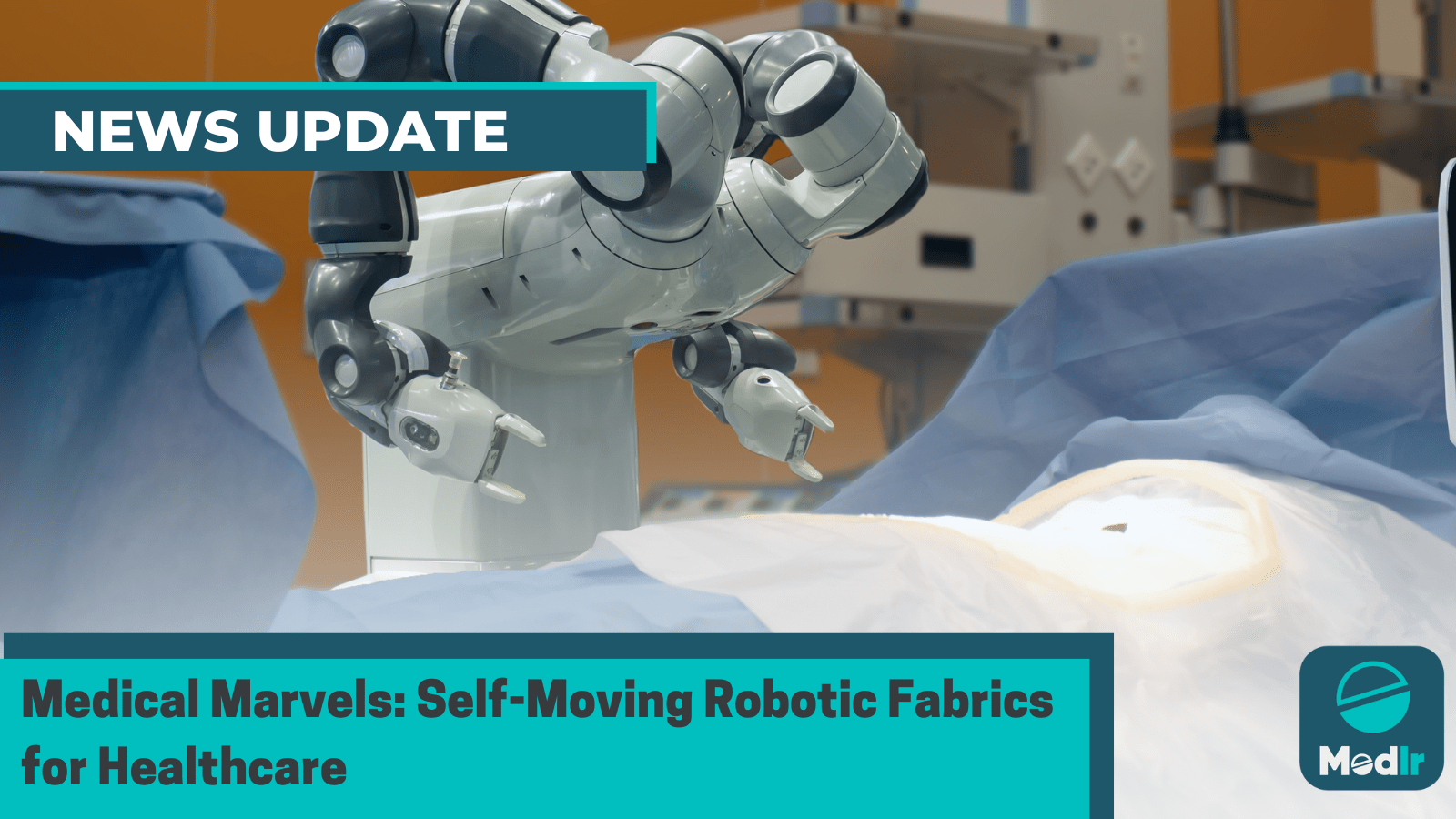Medical Marvels: Self-Moving Robotic Fabrics for Healthcare
Written by Shaveta Arora
Scientists at the University of Sheffield create groundbreaking robotic fabrics, capable of shrinking, growing, and moving together, paving the way for medical applications and exploration of inaccessible spaces.

Scientists at the University of Sheffield have made robotic fabrics that can shrink, grow in size, and move with precision, thanks to their new research. Dr. Roderich Gross from the University's Department of Automatic Control and Systems Engineering led the study, demonstrating the groundbreaking ability of small, low-power robotic modules (about the size of a 50p coin) to connect via an elastic mesh and move together reliably in the same direction, creating an intelligent robotic fabric.
The study, published in Nature Communications, is the first to demonstrate that elastic links empower error-prone robotic modules to march in formation, surpassing the performance of rigidly linked or unlinked modules.
According to the Sheffield scientists, this research lays the foundation for the development of ultra-low-power robotic fabrics capable of navigating spaces inaccessible to humans, like exploring underground water pipes to detect cracks. Additionally, these fabrics could be deployed inside the human body to offer medical monitoring or treatment, as they have the unique ability to shrink when needed.
In the study, researchers developed prototype fabrics comprising small robotic modules, referred to as Kilobots, which are low power and possess limited processing capabilities due to their small size. Each Kilobot relies on vibration motors for movement but lacks the ability to precisely control its own direction. However, when integrated into the elastic mesh, it communicates with other nearby modules, allowing the group to collectively decide on the most optimal way to move and behave.
Traditionally, groups of Kilobots and other small modules are not physically linked. However, the Sheffield study demonstrates how coupling these modules together in an elastic mesh enhances their reliability and enables more coordinated movement.
The Sheffield study demonstrates how coupling the modules together in an elastic mesh enables groups of Kilobots and other small modules, which are usually not physically linked, to move more reliably.
Dr Roderich Gross, Senior Lecturer in Robotics and Computational Intelligence, at the University of Sheffield, said -
“Previous studies have looked at intelligent fabrics that sense their surroundings or change appearance. This study looks at intelligent fabrics that move from one place to another, meaning they could deploy themselves without human assistance. In the future, such fabrics could effectively navigate spaces inaccessible to humans, for example, for inspecting the inside of a jet engine. In the long term, self-moving, stretchable fabrics may be deployed in medical applications, for example, wrapping around a damaged section of an organ and then monitoring or stimulating it at high spatial resolution.”
In the study, the researchers created robotic fabrics using 49 Kilobot modules. Their experiments revealed that a single module cannot move independently in a straight line. A fabric consisting of 16 modules can move in a straight line, but only for a short period. However, as the number of modules in the fabric increases, its ability to move coherently in one direction improves.
Further experiments demonstrated that the fabric can successfully move along a desired circular path and adjust its shape to pass through a narrower space before restoring its original form. Conversely, when the modules are part of a rigid mesh, they are unable to move coherently.
The research highlights a principle similar to how birds move in flocks, showing that a larger number of individuals can effectively determine where to move compared to a smaller group—a concept known as the "many-wrongs principle."
In contrast to relying solely on their individual ability to gather and use information, the modules in the study benefit from the physical bonds within the elastic mesh for negotiation. This means that they require less energy-intensive perception and thinking to act coherently, offering potential advantages for miniaturization and the realization of fabrics comprising thousands of modules.